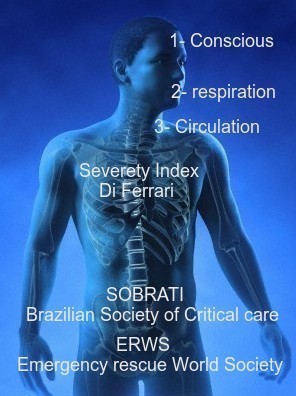


DI FERRARI - SEVERITY INDEX IN EMERGENCY- Autor: FERRARI.D
|
|
The Emergency and the Severity index is a Complex State and Relative. The emergencist must have knowledge clinical and syndromic, to establish the sequence of the Protocol SOBRATI 1-2-3 (1- Conscious; 2-Breathing; 3-Circulation). Nothing more left to known, except the Operation Vital, ie, the three systems - Neurological, Respiratory and Circulatory - to implement measures. The most important goal is to maintain and restore arterial pressure and ventilation support. Every patient should be kept in Mechanical Ventilation Assisted either invasive or non-Invasive, the dependence of Glasgow. Remember: the patient deteriorates and serious if not attended properly can collapse and display PCR. 90% of critically ill patients should be intubated. Not exceed more than 50% of the usual dose in the induction anesthetic - Good Luck - What the Wisdom Drive you" DF *ACLS - CAD ( Circulation, Airway, Defibrillation ) * IBS ( Intensive Basic Support - SOBRATI ) 1-2-3 |
Sequence 1-2-3

The 1-2-3 sequence reflects the initial neurological assessment (glasgow), Breathing (Degree of Dyspnea or Apnea) and Verification Carotid Pulse (Flow Maintenance, filiform - thready or absent).
SCALE OF POINTS OF GRAVITY
|
|
|
CHANCE OF DEATH AND DEGREE OF GRAVITY ( 0 a 10 PoINTS ) : For 1 Point - add 10% of death´s chances - For 9 Pontos ( Pré-CPR)
|
|
PC SYSTEM - CLINICAL RECORD
Paciente: RG: ( anexar no prontuário )
ESCALA DE CHANCES DE ÓBITO - GRAVIDADE
|
Pesquisa desenvolvida pelo Instituto de Pesquisa Clínica Dr. Douglas Ferrari - "Nenhum Índice substitui a Clínica "